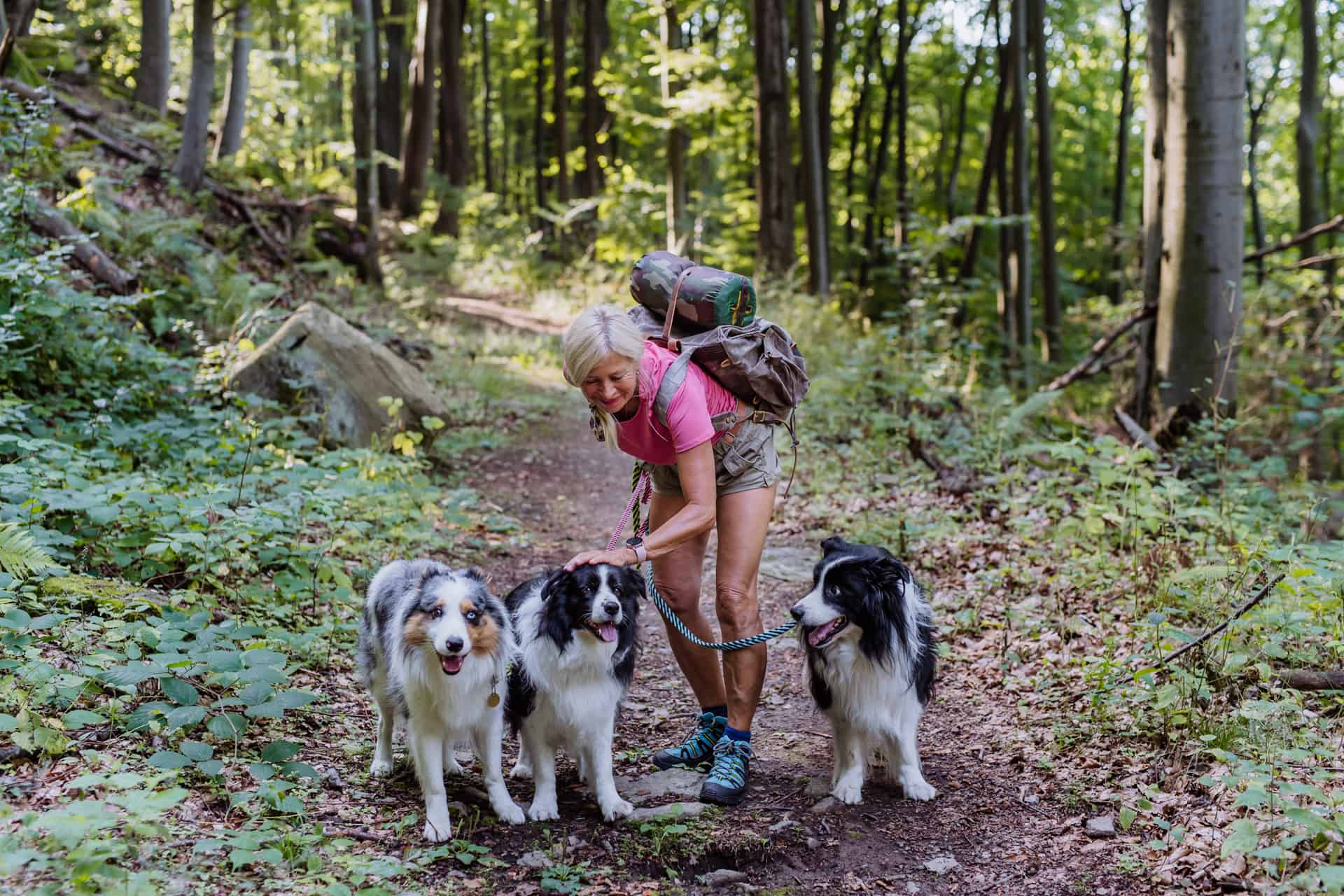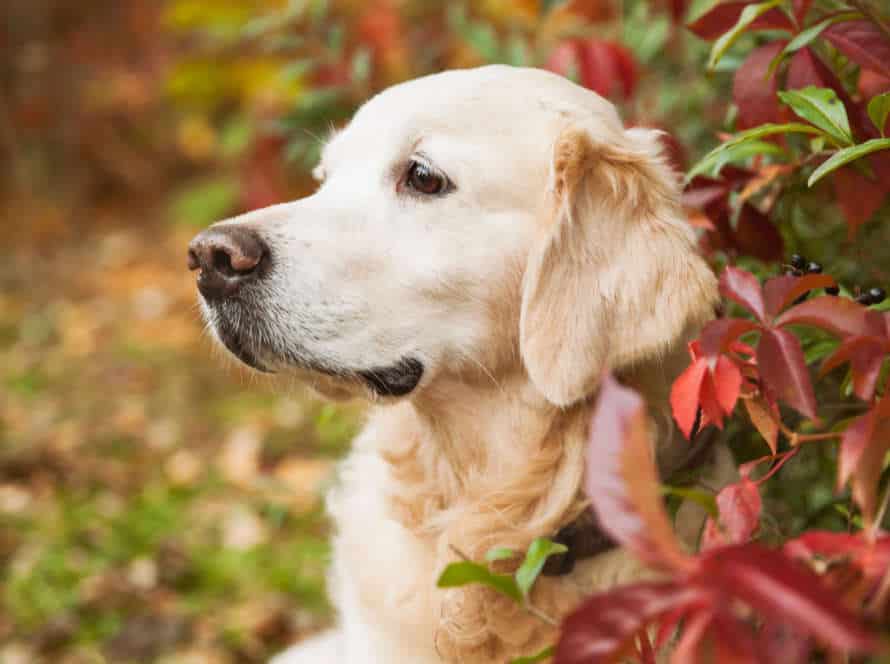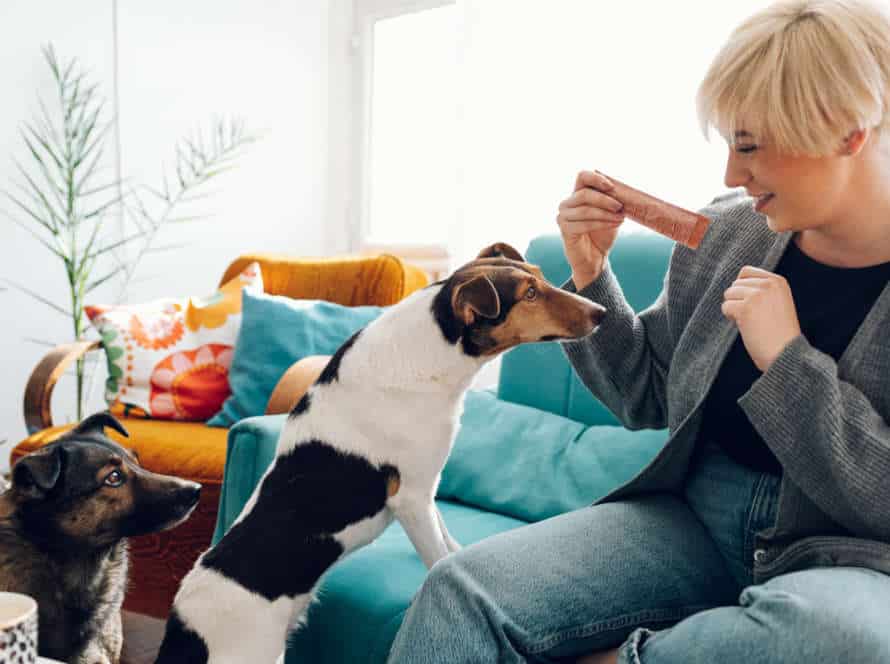Understanding Canine Body Language
Dogs communicate with their whole body! Their facial muscles, ears, tail, and legs all have something to say. Understanding pup body language is a must for humans. This article can help you interpret it and understand your furry friend!
The Importance of Reading Dog Body Language
It’s key to read a pup’s body language to get an idea of its feelings and behavior. Knowing the various types of doggy body language can keep you and those around you safe from bites and other unpleasantness. Here are a few examples:
- Tail: Wagging is happy, tucked is scared or anxious.
- Ears: Up and attentive, down and aggressive or submissive.
- Eyes: Wide and fixed is aggression or fear, gentle eyes are friendly.
- Posture: Relaxed is comfy, tense and hackles up means aggression or fear.
By knowing and responding to your pooch’s body language, you can build an even better bond and protect everyone.
Understanding the Non-Verbal Cues
Dogs show their moods and behaviors in a variety of non-verbal ways. Let’s look at the important ones.
- Ears: Pricked forward = attentiveness or excitement. Pinned back = fear or submission.
- Tail: Wagging = happiness. Tucked or stiff = fear or aggression.
- Eyes: Direct contact can be seen as a challenge. Dilated pupils = fear, excitement, or aggression.
- Body posture: Relaxed = happy. Tense, hunched = fear or aggression.
By reading your pup’s body language, you can better help them.
Pro tip: Before approaching a strange dog, check their body language and ask the owner if it’s okay.
Key Canine Body Language Signals
Dogs have lots of ways to show their feelings. Knowing these signs is important for a good relationship with your pup.
Here are some key ones:
- Tail wagging: Can mean happy or aggressive. Big swings mean happy. Low and stiff wagging can signal stress or aggression.
- Ears: Raised ears mean alert. Flattened ears can mean fear or aggression.
- Body posture: A relaxed body with a wagging tail means happy. A tense body and low head signal fear or aggression.
These signs help us understand our pup’s needs and build a better bond.
Decoding Dog Body Language
Dogs are great talkers! Their body language tells us a lot. It’s important to learn how to read their subtle cues. This can help us when we’re with our furry friends. Let’s take a look at some common canine body language signs. These let us know when our doggos are feeling excited, scared, or uncomfortable.
Understanding Aggression Signals
It’s essential for every dog owner to recognize aggression signals their pup may be displaying. Here are some to look out for:
- Growling? That’s a no-no. If your pup’s body is stiff and they’re staring, that’s a sign of aggression too.
- Teeth baring is a dead giveaway. If their fur is up, that could mean aggression, fear or even excitement.
- Cowering is a sign of fear and should be handled with caution.
- The tail also gives clues: high and rigid means dominance or aggression, while low and tucked is fear or submission.
Knowing these cues can help you communicate better with your pup and ensure everyone’s safety.
Understanding Fear Signals
Dogs communicate with us using body language. To better understand what they are trying to say, watch out for fear signals. These might include:
- Tail tucking – if a pup is anxious or scared, it will tuck its tail between its legs.
- Crouching – they may lower their body if frightened.
- Ears back – if the ears are flattened against the head, it can mean fear or discomfort.
- Avoidance – if scared or anxious, a dog may try to avoid contact with people or other animals.
- Lip licking and yawning – when nervous or overwhelmed, dogs may lick their lips and yawn.
Recognizing these fear signals can help us give our dogs a safe and secure space where they can relax. Pro tip: if you spot any of these, remove them from the stressful situation.
Understanding Happy Signals
Knowing happy signs is a must for understanding pup body language and interacting with your four-legged buddy.
Here are the most common ones to look for:
- Tail-wagging: When a dog’s tail moves in a calm, sweeping motion, it usually suggests joy and thrill.
- Playfulness: A cheerful pup will show playful actions such as bouncing, running, and gentle mouthing.
- Comfy body language: A loose and stress-free body posture is a great indication that your pup is content.
- Eye contact: A dog who is pleased with you will usually make eye contact and hold it.
- Ears: A cheerful dog will have their ears pointing forward or slightly sideways.
- Panting: Pups may pant when they’re thrilled, playing, or exercising.
Understanding and replying to happy signals will make the bond between you and your pup even stronger and more rewarding.
Understanding Stress Signals
Dogs communicate with body language. Learning to recognize stress signals helps us understand their emotions and keep conflicts away. Here are some common signs of stress:
- Panting with an open mouth
- Shaking off
- Yawning
- Showing the whites of their eyes (whale eye)
- Lip licking
Knowing these can help us prevent misunderstandings and maintain a good connection!
Understanding Calming Signals
Calming signals are subtle hints or body language dogs use to show their emotions and create a peaceful atmosphere with other dogs or people. Knowing these signs is crucial for understanding canine body language and forming a bond with your furry friend.
Here are some common calming signals:
- Yawning: Dogs often yawn when they’re stressed or trying to say they’re not aggressive.
- Lip licking: Tongue-flicking or lip-licking is a sign of anxiety and an attempt to avoid a fight.
- Avoiding eye contact: This is usually a sign of submission and asking for more space or no aggression.
- Sniffing the ground: Sniffing can mean they are relaxing or altering the conversation.
By picking up on these calming signals and reacting correctly, you can make the connection with your pup better. Pro tip: Watch your pup’s body language closely when you train or play with them, so you can recognize the calming signals and respond to them.
Interpreting Context
Grasping canine communication is as crucial as comprehending verbal communication. Clues to a pup’s feelings and desires can be found in its body language. Assessing context – the environment around the pup and the people involved – is key to correctly deciphering canine body language.
Let us explore further and see how context can assist us with understanding dogs better.
Looking at Overall Body Language
Dogs communicate more through body language than vocalizations. To have a good relationship with your pup, you need to understand their body language. Here’s what to look out for:
- Posture: Is your dog standing straight or leaning?
- Tail: Is it wagging or raised?
- Ears: Flattened or perked up?
- Mouth: Open or closed? Panting?
It’s all about context – no single behavior reflects what’s in their head.
Tip: Be cautious when approaching a dog, especially if you don’t know them. Give them space and avoid eye contact.
Listening to Vocalizations
Dogs have a variety of vocalizations, like growls, barks, and whines. Listening to them can help understand their needs and feelings. Growling is a sign that they’re feeling anxious, afraid, or defensive. Respect this signal, don’t approach or do anything threatening. Barking expresses emotions, like excitement or annoyance, while a high-pitched one may mean playfulness. A deep, repetitive bark could mean they want attention or are guarding territory. Whining is usually a sign of stress, anxiety, or discomfort. It can also mean excitement, like when they greet their owner or are excited for a walk or treat. Pay attention to the tone, pitch, and duration of the vocalizations to better interpret context and respond.
Considering the Environment
Considering the environment is key when it comes to interpreting a pup’s body language. Here are the main aspects to keep in mind:
- Location – Familiar or unfamiliar surroundings? Any potential stressors?
- Body posture – Standing tall or crouching? Ears up or down? Tail wagging or tucked?
- Eye contact – Maintaining it or avoiding it? Pupils dilated or constricted?
- Vocalizations – Whimpering, growling, barking, or whining? High-pitched or low-pitched?
By taking these into account, owners and handlers can better understand their pup’s body language and ensure their safety and wellbeing.
Communication Techniques
Dogs communicate using visual, auditory and olfactory signals. These signals, such as tail wagging and barking, are meant to say something. The environment and relationship between the sender and receiver can impact them. Knowing what your dog is trying to say can help you better understand them. Here are some common canine communication techniques:
Properly Approaching a Dog
Dogs show us their feelings and plans with body language. It’s important to get it right, so you don’t have any problems or bad things happen. Here are tips for when you meet a dog:
- Look for relaxation signs. A relaxed dog will move easily, and maybe wag its tail lightly. They may also look at you and come closer.
- Don’t look it in the eyes. This can be seen as a threat. Look away or look down.
- Don’t go straight to its head. This can be weird or alarming. Go up from the side, let it smell you and get used to you.
- Put out a closed fist for it to sniff. This is better than an open hand, which could be too pushy.
Knowing how dogs talk helps us make friends with them and live together in peace.
How to Greet a Dog
Greeting a dog can be tricky. Knowing how dogs communicate is key to a successful and safe greeting. Here are some tips:
- Approach slowly, sideways, with no direct eye contact.
- Let the dog sniff and investigate you first.
- Offer a closed hand and avoid petting the head, which could be seen as threatening.
- Be aware of signs of discomfort – low growl, teeth showing, hunched back.
- If the dog looks uncomfortable, calmly walk away, no sudden moves or loud noises.
Communicating with dogs builds trust and prevents conflicts.
Pro tip: Always get owner’s permission and respect the dog’s boundaries when greeting new pups.
Effective Communication Methods with Dogs
Understand your pup’s body language to communicate effectively. Observe their postures and expressions to understand what they’re trying to say.
Positively reward good behavior with treats, toys, or affection. Use clear and consistent commands with short phrases. Never physically punish your dog; use positive reinforcement instead.
Spend quality time playing, walking, and engaging together. Show love and care.
Conclusion and Summary of Key Points
Finally, it’s key for pup owners and admirers to comprehend canine communication and decipher doggy body language. This helps us bond with our furry buddies, create a better connection with them, and prevent any potential issues of miscommunication or disputes.
Remember these significant points:
- Dogs use a mix of body language, vocalizations, and scent signals to speak with us and other canines.
- Knowing their posture, ear placement, wagging, and face expressions can give us clues about how they’re feeling, what they want, and what they need.
- The context is critical when interpreting dog body language. Notice the atmosphere, environment, and other dogs or people around.
- Positive reinforcement, clear communication, and patience are essential for productive training and behavior modification.
By learning to read dog body language, we can make a more secure, cheerful, and gratifying life for our furry pals.
Frequently Asked Questions
1. What are some common signs of anxiety in dogs?
Some common signs of anxiety in dogs include panting, pacing, trembling, drooling, and yawning. Additionally, a dog’s tail may be tucked between its legs, or its ears may be pinned back.
2. How can I tell if my dog is comfortable around me?
A comfortable, happy dog will have a relaxed, wagging tail, and its eyes will be soft and relaxed. It may also pant gently, and its ears will be up or slightly forward.
3. What does it mean when a dog yawns?
A dog may yawn for a variety of reasons, including being tired or bored. However, it can also be a sign of anxiety or stress.
4. How do dogs use their ears to communicate?
Dogs use their ears to communicate a wide range of emotions. For example, when a dog is alert, its ears will be upright and forward. If a dog is feeling submissive or scared, its ears may be pinned back against its head.
5. Can dogs communicate with their tails?
Yes, a dog’s tail is an important tool for communication. A wagging tail can indicate excitement or happiness. However, a tucked tail can indicate fear or anxiety.
6. How can I tell if my dog is feeling aggressive?
A dog that is feeling aggressive may show signs such as raised hackles, a stiff posture, and intense staring. It may also growl, bare its teeth, or lunge forward.







